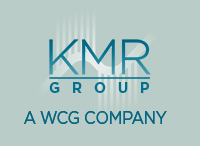Yes, it depends. We have been getting the question of whether we benchmark just how long it takes to get 50, 75 and 90 % of sites up and running. KMR first performed this analysis back in 2011 for our inaugural Enrollment Productivity Study and then in 2014 as part of our Enrollment Insights program.
Given this analysis is now going mainstream, we are keen on understanding how companies are planning to use this data. We have also revisited this analysis and have a few thoughts that might help the discussion.
From a technical aspect, the analysis is fairly straightforward. However, the interpretation can be difficult because this type of analysis uses percentiles which can mask issues related to study size. For the same reason it can be tricky to assess performance or set benchmarks. Even within a specific indication the results may be skewed because of the varying sizes of studies. For example, if your company runs larger studies on average, your time will likely be longer to get to a percentile of sites initiated, but is that fair? For example, a study with 10 sites vs a study with 100 sites will have very different cycle times to get to the 50th percentile of sites initiated.
We tend to think of this metric as an “on-study” metric, one that is helpful to assess during the course of a study to help those during study conduct determine whether a given study is “on target”. For these types of analyses the percentile and the associated months are generally tied to a plan and these plan targets are determined based to some extent on the disease and size of study. But the question is “what is the best metric to set the plan?”. Instead of the “time to achieve the 50th percentile of sites initiated” we would advocate using a site initiation rate benchmark. To get more nuanced you might set this rate based on the percentile intervals, e.g., the site initiation rate benchmark from the 0-25th percentile. Indeed, we have found that the rate of site initiation is considerably lower in the last quartile compared to the first quartile of the site initiation period. Also, using a rate rather than the actual time to the specific percentile helps to eliminate the bias of study size either positive or negative.
Now that we have shared some of our thoughts around this type of analysis, we would be interested in hearing yours. Can you tell us how you plan to use this type of performance measure? Is your interest geared more towards planning or assessing performance, e.g., how long it takes to get x% of sites initiated for purposes of planning a new study? Or more along the lines of whether your company is getting its sites initiated efficiently? Or something completely different! Let us hear from you and we may print your response.
Now that we have presented this information, we are excited to let you know that our Enrollment Productivity Study is on the schedule for 2018 so you can expect to hear more about this analysis soon.
Linda Martin
President and Founder
KMR Group

